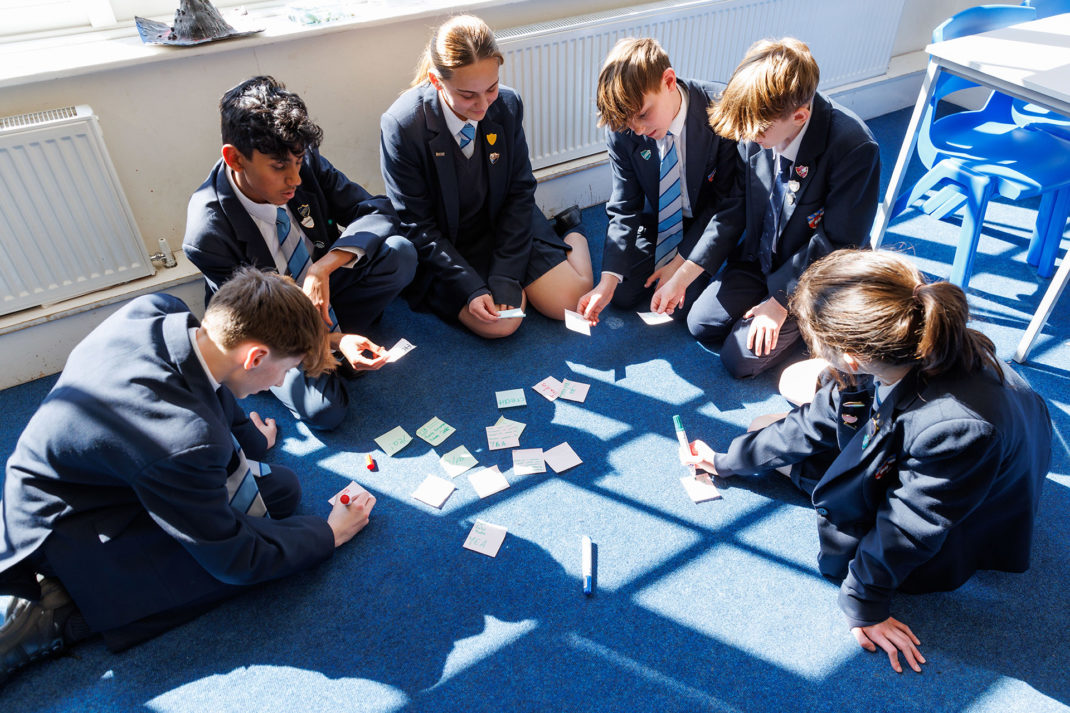It’s Sew Fantastic: Why Fashion Is A Popular Subject At School
By
1 year ago
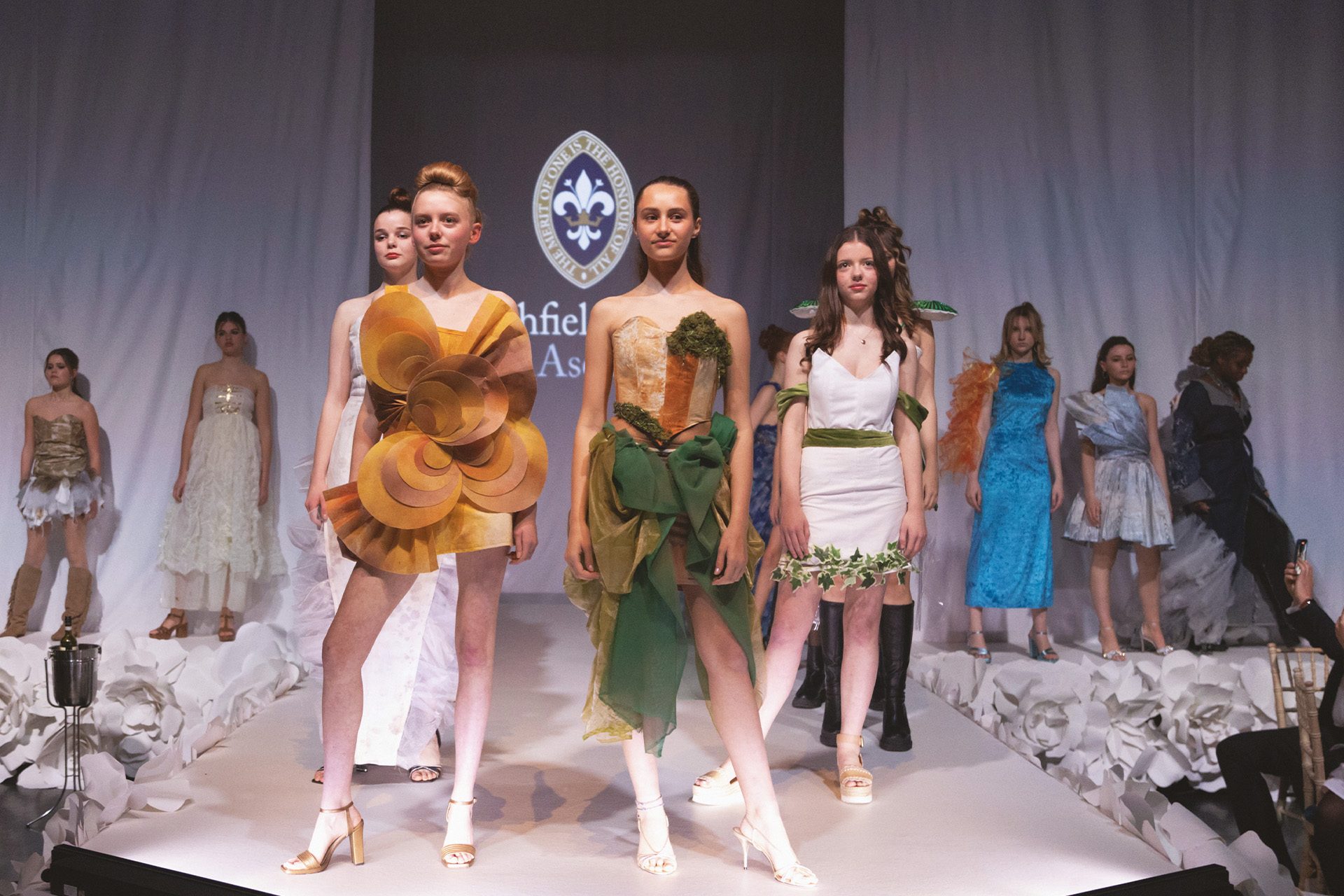
Studying fashion and textiles is increasingly popular as schools cotton on to its enduring appeal, finds Alice Smellie
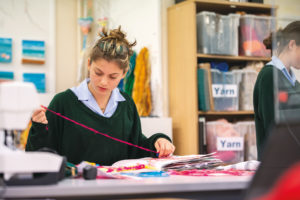
Downe House School, Berkshire
Recollections may vary, but if memory serves correctly, sewing classes used to be rather dreary. A hapless student would spend weeks labouring with bloodied fingers over an apron or a peg bag that would never be used. How times have changed. Textiles is now considered a cool subject all the way through school to GCSE, A-level and beyond, coming with a range of practical and transferable techniques and a host of career possibilities. Sewing is very firmly back in style.
‘Everyone thinks of textiles as being a 1950s home economics choice for girls, but it’s a far broader subject than that,’ says Jemma Lacey, Head of Art and Design at Leweston School. Its Norfolk Art and Design centre has a designated sewing studio as well as 3D printing and laser cutting facilities. Fashion and Textile design is part of the curriculum for Years 7 to 9, and pupils may then choose to study Textiles at GCSE or A-level standard.
Of course, part of the subject is the practicality of understanding garments and how they’re made, as well as learning to look after clothes. To that end Leweston teaches hand-stitching and mending, providing skills that come in handy later in life.
It’s also very much perceived as a fun subject to study. ‘There’s huge joy in creating something,’ says Vicki Brandon, who teaches Engineering, Enterprise and Technology (EET) and Textiles at Cheltenham Ladies’ College, where the subject is woven into the fabric of school life and offered as a subject from year 9 onwards.
‘I currently have four classes and it’s increasingly popular,’ says Brandon. ‘In the spring term we do a sustainable fashion project where pupils convert a second hand man’s shirt into wearable fashion.’ The girls learn fabric manipulation, and they dart, pleat and tuck on a mannequin. ‘This is hugely popular, as it’s just like fashion school.’
As an added challenge they aren’t allowed to waste any fabric. ‘It’s the sort of project given to undergraduates, and as you can imagine, outcomes are wildly different.’ At the end of the term the girls have an upcycled fashion show.
It’s fair to say that although there is a great deal of hard work, there is a certain amount of glamour. Many schools offering textiles have some form of fashion show, and these frequently have as impressive sounding a FROW (front row) as any Fashion Week show.
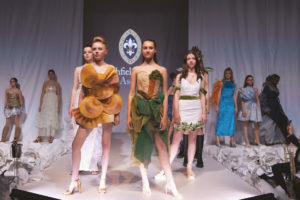
Heathfield School, Ascot
Heathfield School’s most recent show had a theme of Primavera and stretched across two evenings. ‘We showcased KS3, GCSE and A-level work, and most of the school was involved,’ says Angela Farrugia, Head of Art and Design. ‘We think of the school as having a creative thread running through from start to finish, and from Year 7 we integrate textiles into the curriculum.’
The old girls very much came into their own in terms of support. ‘Before the show, Charlotte Stockdale, stylist to the stars, and who has worked with publications from US Harper’s Bazaar to Dazed & Confused, gave a webinar talking through students’ outfits and accessories. Amber Le Bon, model and daughter of Yasmin and Simon Le Bon, helped the girls with their runway routines, giving insider hints and tips.’
An arch of flowers welcomed the guests – in fitting with the Primavera theme – and the school hired an independent production company for lighting and music. A representative from Dior came and sat in the audience, along with parents and prospective parents, and liked the work so much that they inquired whether certain garments were for sale. Harrods did the goody bags. ‘It’s an effort that involves the entire school and brings together our community,’ admits Farrugia. It’s also a cut above apron making!
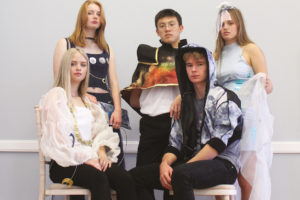
Leweston School, Dorset
Leweston also hosts an annual fashion show; over the years this has included such diverse items as tie-dye t-shirts, kimonos and top hats. ‘It’s a brilliant way of showcasing the vast amount of talent in the school,’ says Jemma Lacey. Equally vital to the subject are the topics of sustainability, politics and human rights. ‘Our course has gone through a big change,’ says Louise Fellingham, Head of Fashion Design at Bedales.
The school has just rewritten their BAC (Bedales Assessed Course, which is accepted as a GCSE by all institutions) specification, and at A-level standard, they no longer have a written exam, but a practical A-level qualification in design with a subheading of fashion and textiles. ‘I don’t feel I could teach the subject if we weren’t instilling the importance of sustainability. Pupils learn about ethical practices and recycling fabrics.’
Pupils are all interested in saving the planet, says Cheltenham’s Vicki Brandon. ‘We’ve just done a year 9 presentation looking at issues around sustainability and fast fashion. The girls wrote a policy pitch addressing the UK government about what needs changing in terms of reducing landfill reliance on fashion.’
She says that they’ve also explored growing fabric from mushrooms – certainly a sustainable option – and reinvigorating manufacturing in the UK. ‘I run an upcycling club two nights a week, and our annual fashion show included a highly popular ‘trashion’ category – making clothes from rubbish.
‘There was a dress made entirely from 3,200 coffee pods and another from Covid test kits.’
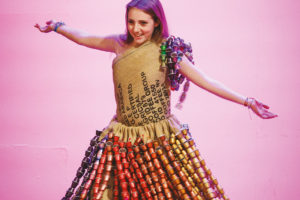
Cheltenham Ladies’ College, Gloucestershire
Fashion lessons build a wide range of skills, as well as teaching a huge amount of independence. ‘Textiles processes require an artistic flair, thoughtful decision making and resilience off the back of thorough research,’ says Amy Majerski, Head of Textiles at Downe House. Her GCSE pupils are taught an extensive bank of skills such as drawing and mark making, the manipulation of textiles, weaving, knitting, printmaking, and construction.
The GCSE Art and Design Textiles course focuses on natural forms and sketchbook pages, and explorative sampling and final garments are utterly stunning, with each independent sketchbook showing how much dedication and creativity is required to produce a final item.
Although it might appear that if you take textiles you want to work in fashion, this is by no means the case. In terms of the job market it’s an incredibly important and flexible subject, says Farrugia. ‘Obviously textiles sits at the heart of many creative industries, but also involves dye manufacturers, software developers, statisticians, journalists, fabric construction for practical uses, such as in hospitals. The breadth of possibilities is extraordinary.’ It’s worth remembering that the UK textiles industry contributes almost £20 billion to the economy.
There’s a broad spectrum of careers available, agrees Amy Majerski. ‘Textiles at A-level is quite a vocational subject, and girls tend to want to take it further. Many now work as fashion designers, either for high-end brands or as independent entrepreneurs.’
For Charlotte Weaver, now a designer for H&M Divided, who was at Pennthorpe Preparatory School and then the College of Richard Collyer, this dream has come true, and her love of art and fashion started at school. ‘I had an amazing art teacher at Pennthorpe and he really nurtured my art, helping me realise I had a talent.’
At sixth form, she went on to study textiles. ‘Although the course was about fabric development, I was so interested in the subject that I bought a sewing machine and taught myself how to make my own clothes. The independence of the course meant that I could choose my own pathway. Now I have my dream job.’
And fashion success can start at any age. Nell Kittoe, who is in year 11 at King’s Ely Senior, was awarded first place in the ‘Evening wear Teenage’ category of the 2023 Stitch Festival Dressmaking Competition with a jacket inspired by the oyster shells and seaweed she saw on a holiday to France.
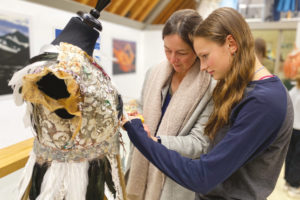
King’s Ely, Cambridgeshire
‘Although everyone assumes that textiles is about an interest in fashion, we’ve had pupils enter marketing, buying, merchandising and interiors,’ points out Lacey. ‘There’s a Year 12 boy doing a Game of Thrones project because he wants to go into costume design, and he is working with leather and metal.’
Bedales agrees that it’s no longer a gendered subject. ‘We have a steady flow of boys doing textiles, and they don’t see it as being embarrassing in any way,’ says Fellingham. She also references the wellbeing link. ‘Sewing and creating is practical and also mindful. In addition, it gives students the opportunity to have ownership of a theme and communicate a message, whether that’s political or a personal story.’
Whether it’s a career designing for the catwalk or a lifetime love of crafting, clearly textiles is still part of the rich tapestry of school life.
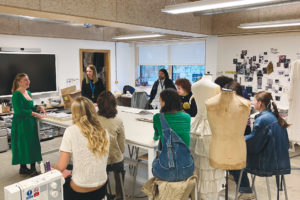
Coco Conran, Bedales School alumni
Fashion Alumni
Thread connects these old girls to their schools
Heathfield
Amber Le Bon, Model
Isabella Blow, Magazine editor
Cheltenham Ladies
Amanda Wakeley, Fashion designer
Katherine Hamnett, Fashion designer
Tamara Hill-Norton, Sweaty Betty founder
Bryony Thomasson, Textiles expert for West End and film designer
Downe House
Annette Worsley-Taylor, Fashion entrepreneur and the founder of London Fashion Week
Leweston
Alice Wedge, Senior womenswear designer for Tommy Hilfiger, prior to which she worked for five years at Vivienne Westwood
Bedales
Edie Ashley, Vivienne Westwood charitable foundation
Coco Conran, Womenswear designer

